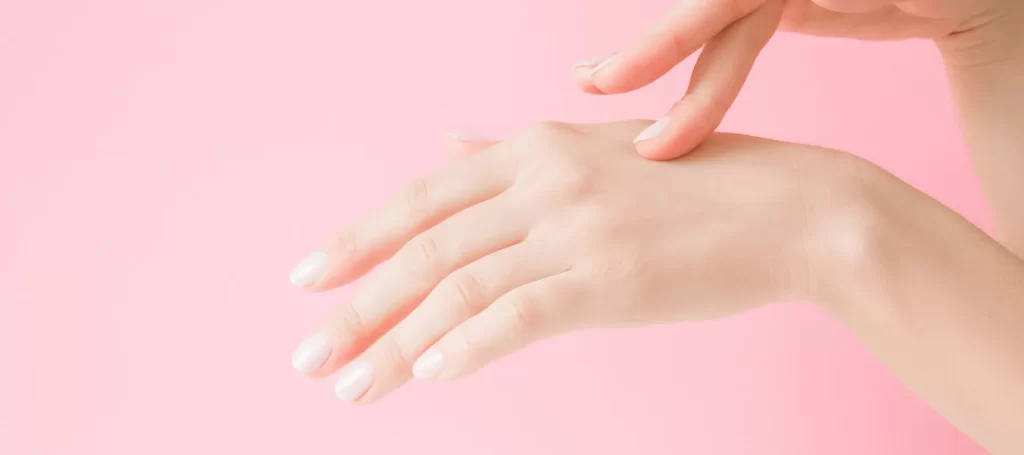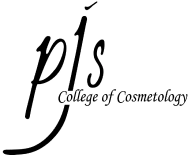August 28, 2025
Complete Guide to Nail Disorders, Diseases, and Conditions for Professionals

Professional Nail Health Guide: Identifying and Managing Common Nail Conditions
Nail technicians and beauty professionals must recognize various nail conditions to provide safe, appropriate services and know when to refer clients to medical professionals. This comprehensive guide covers common nail disorders, diseases, and abnormalities that beauty professionals encounter, providing essential knowledge for maintaining client safety and professional standards.
Understanding Normal Nail Anatomy
Nail Structure Components
Before identifying abnormalities, professionals must understand healthy nail anatomy:
- Nail Plate: The visible hard portion composed of keratin
- Nail Bed: The skin beneath the nail plate containing blood vessels and nerves
- Nail Matrix: The growing area beneath the cuticle where new nail cells form
- Cuticle: The protective seal between the nail plate and surrounding skin
- Lunula: The white, crescent-shaped area at the base of the nail
- Hyponychium: The seal between the nail plate and fingertip
- Eponychium: The living tissue at the base of the nail plate
Healthy Nail Characteristics
Normal, healthy nails exhibit:
- Smooth Surface: No ridges, pits, or irregularities
- Pink Nail Bed: Good circulation creating healthy color
- Firm Attachment: Nail plate securely attached to nail bed
- Regular Growth: Consistent growth rate and pattern
- Flexible Strength: Resistant to breaking but not brittle
- Clear Nail Plate: Translucent with natural shine
Infectious Nail Conditions
Bacterial Infections
Paronychia (Bacterial)
- Symptoms: Red, swollen, painful tissue around nail borders
- Causes: Bacteria entering through breaks in skin, often from aggressive cuticle cutting
- Professional Response: Discontinue services, recommend medical evaluation
- Prevention: Proper sanitation, gentle cuticle care, avoid aggressive cutting
Nail Bed Infections
- Symptoms: Pus formation under nail plate, pain, discoloration
- Risk Factors: Trauma, improper nail care, compromised immune system
- Professional Action: Refuse service, recommend immediate medical attention
- Legal Considerations: Document refusal and recommendation in client records
Fungal Infections (Onychomycosis)
Dermatophyte Infections
- Appearance: Yellow, brown, or white discoloration; thickened nails; crumbling edges
- Common Types: Trichophyton rubrum, Trichophyton mentagrophytes
- Transmission: Direct contact, contaminated surfaces, shared footwear
- Professional Protocol: Cannot provide services on infected nails, refer to physician
Yeast Infections (Candida)
- Symptoms: Swelling and redness around nail folds, nail separation
- Risk Factors: Frequent water exposure, diabetes, immunocompromised clients
- Identification: Often affects multiple nails, associated with chronic paronychia
- Service Restrictions: Avoid services on affected areas until medically cleared
Viral Infections
Periungual Warts
- Appearance: Rough, cauliflower-like growths around nail area
- Cause: Human papillomavirus (HPV)
- Transmission: Direct contact, contaminated surfaces
- Professional Response: Cannot perform services, recommend dermatological treatment
Non-Infectious Nail Disorders
Nail Plate Abnormalities
Onycholysis
- Definition: Separation of nail plate from nail bed
- Causes: Trauma, chemical exposure, thyroid disorders, psoriasis
- Appearance: White or yellowish area where nail has lifted
- Service Modifications: Avoid pressure on separated areas, gentle handling only
Onychogryphosis (Ram’s Horn Nails)
- Characteristics: Extremely thickened, curved nails resembling animal claws
- Common Causes: Age, poor circulation, trauma, neglect
- Professional Limitations: May require medical podiatrist care before nail services
- Safety Concerns: Risk of injury due to thickness and curvature
Onychorrhexis (Longitudinal Ridging)
- Appearance: Vertical ridges running from cuticle to free edge
- Causes: Aging, nutritional deficiencies, medical conditions
- Service Considerations: Use gentle filing techniques, avoid aggressive buffing
- Client Education: Recommend proper nutrition and hydration
Beau’s Lines
- Description: Horizontal ridges or indentations across nail plate
- Causes: Severe illness, malnutrition, chemotherapy, trauma
- Timeline: Appear weeks after triggering event as nail grows
- Professional Approach: Gentle care, avoid aggressive filing over ridged areas
Color Changes and Discoloration
Leukonychia (White Spots/Lines)
- True Leukonychia: White areas in nail plate itself
- Apparent Leukonychia: White appearance due to nail bed changes
- Common Causes: Minor trauma, air bubbles, hereditary factors
- Service Impact: Generally cosmetic issue, no service restrictions needed
Yellow Nail Syndrome
- Characteristics: Yellow to green discoloration, slow growth, curved nails
- Associated Conditions: Respiratory disorders, lymphatic problems
- Professional Response: Gentle services only, recommend medical evaluation
- Long-term Considerations: May be chronic condition requiring ongoing accommodation
Melanonychia (Dark Pigmentation)
- Description: Brown or black streaks in nail plate
- Benign Causes: Normal pigmentation in darker-skinned individuals, medications
- Concerning Signs: New appearance, widening, irregular borders
- Critical Action: New or changing pigmentation requires immediate medical referral
Systemic Conditions Affecting Nails
Autoimmune Disorders
Psoriatic Nail Disease
- Symptoms: Pitting, oil spots, onycholysis, nail thickening
- Prevalence: Affects 80-90% of people with psoriasis
- Service Modifications: Gentle techniques, avoid trauma that could trigger flares
- Client Communication: Understand condition may fluctuate with treatment
Alopecia Areata Nail Changes
- Appearance: Fine pitting, geometric patterns, rough surfaces
- Correlation: Often accompanies hair loss from alopecia areata
- Professional Approach: Extra gentle care, avoid aggressive treatments
- Prognosis: May improve as underlying condition is treated
Systemic Disease Indicators
Clubbing (Hippocratic Nails)
- Characteristics: Enlarged fingertips with curved nails
- Medical Significance: Often indicates serious cardiovascular or respiratory disease
- Professional Responsibility: Recommend medical evaluation if newly observed
- Service Adaptations: Accommodate enlarged nail beds in service planning
Spoon Nails (Koilonychia)
- Appearance: Nails curve inward, creating spoon-like depression
- Common Causes: Iron deficiency anemia, thyroid disorders
- Professional Response: Gentle services, recommend nutritional evaluation
- Long-term Management: May improve with treatment of underlying condition
Trauma-Related Nail Conditions
Acute Nail Trauma
Subungual Hematoma
- Description: Blood collection under nail plate from injury
- Appearance: Dark red to black discoloration under nail
- Professional Protocol: Avoid pressure, allow natural healing
- Medical Referral: Large hematomas may require drainage by physician
Nail Avulsion
- Definition: Partial or complete separation of nail from nail bed
- Causes: Severe trauma, crushing injuries, medical procedures
- Healing Process: Takes 6-8 months for complete nail regrowth
- Service Timeline: No services until completely healed and medical clearance obtained
Chronic Trauma Effects
Habitual Nail Changes
- Nail Biting Effects: Shortened nails, irregular edges, increased infection risk
- Picking Habits: Cuticle damage, chronic paronychia, scarring
- Professional Approach: Gentle rehabilitation, client education
- Behavioral Support: May require counseling or habit-breaking techniques
Age-Related Nail Changes
Normal Aging Process
Structural Changes
- Growth Rate: Decreases approximately 0.5% per year after age 25
- Thickness: Gradually increases, especially in toenails
- Color: May become more opaque or yellowish
- Texture: Increased ridging and brittleness common
Service Adaptations for Elderly Clients
- Extended Processing Time: Allow more time for all services
- Gentle Pressure: Use minimal pressure during filing and massage
- Frequent Hydration: Emphasize moisturizing treatments
- Safety Precautions: Extra attention to preventing injury
Professional Assessment and Documentation
Visual Examination Protocol
Systematic Assessment Steps:
- Overall Nail Appearance: Color, shape, thickness, surface texture
- Nail Bed Evaluation: Color, attachment, signs of inflammation
- Surrounding Tissue: Cuticle health, fold condition, swelling
- Growth Patterns: Rate, direction, consistency
- Client History: Previous problems, medical conditions, medications
Documentation Requirements
Client Record Essentials:
- Date of Assessment: When condition was first observed
- Detailed Description: Specific appearance and location of abnormalities
- Photographic Evidence: With client consent, for tracking changes
- Client Response: Any symptoms or concerns reported
- Actions Taken: Services provided or refused, referrals made
- Follow-up Plans: Monitoring schedule and re-evaluation dates
Legal and Ethical Considerations
Scope of Practice Limitations
What Nail Technicians Cannot Do:
- Diagnose medical conditions
- Treat infections or diseases
- Provide medical advice
- Service infectious conditions
- Ignore concerning symptoms
Professional Responsibilities:
- Recognize conditions requiring medical attention
- Refuse services when appropriate
- Document observations and actions
- Maintain current knowledge through continuing education
- Follow state board regulations and guidelines
Client Communication Strategies
Discussing Concerning Conditions:
- Use non-diagnostic language
- Express observations, not medical opinions
- Provide gentle but clear recommendations
- Offer support and reassurance
- Document all conversations
Prevention and Education
Client Education Topics
Home Nail Care Guidance:
- Proper Hygiene: Daily cleaning and moisturizing routines
- Safe Practices: Avoiding trauma and harsh chemicals
- Nutrition Impact: How diet affects nail health
- Warning Signs: When to seek professional or medical help
- Product Selection: Choosing appropriate home care products
Professional Prevention Strategies
Salon Safety Protocols:
- Sanitation Standards: EPA-registered disinfectants, proper sterilization
- Client Screening: Pre-service health questionnaires
- Tool Maintenance: Regular replacement and proper storage
- Staff Training: Ongoing education about condition recognition
- Emergency Procedures: Protocols for handling concerning discoveries
When to Refer to Medical Professionals
Immediate Medical Referral Required:
- Signs of infection (pus, severe pain, red streaking)
- Sudden changes in nail color or texture
- New pigmented lines or spots
- Severe pain or swelling
- Any condition causing client distress
Routine Medical Consultation Recommended:
- Persistent nail problems
- Changes associated with systemic symptoms
- Chronic conditions affecting nail health
- Questions about medication effects on nails
Building Professional Expertise
Continuing Education Importance
Staying current with nail health knowledge requires:
- Regular Training: Attending workshops on nail disorders
- Professional Literature: Reading industry publications and medical journals
- Networking: Connecting with dermatologists and podiatrists
- Certification Programs: Pursuing specialized nail health credentials
Career Development Opportunities
Advanced nail health knowledge opens doors to:
- Medical Nail Technician: Working in podiatry or dermatology offices
- Specialized Services: Focusing on nail health and rehabilitation
- Education Roles: Teaching nail health to other professionals
- Consultation Services: Advising on nail care protocols
At PJ’s College of Cosmetology, we provide comprehensive nail health education as part of our nail technology program. Our curriculum covers normal nail anatomy, common disorders, professional assessment techniques, and appropriate referral protocols.
Students gain hands-on experience recognizing various nail conditions in our student clinics while learning proper documentation and client communication skills. This thorough preparation ensures graduates can provide safe, professional services while knowing their scope of practice limitations.
